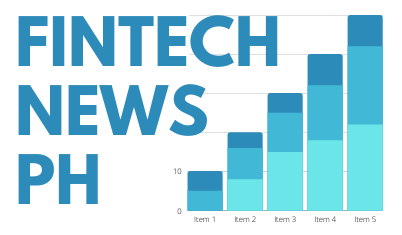Philippine banking stalwart Security Bank is pursuing a dual strategy of robust loan growth and strategic digital expansion, a path that comes with the challenge of navigating capital management and an upcoming acquisition.

This drive, however, is exerting pressure on the bank’s capital buffers, leading Moody’s Ratings to revise its outlook for the financial institution from stable to negative. “We revised the outlook on Security Bank’s deposit, issuer and senior unsecured ratings to negative from stable mainly because of negative pressure on the bank’s capital buffer,” the ratings agency stated in its latest report.
Moody’s highlighted a notable decrease in Security Bank’s tangible common equity as a percentage of risk-weighted assets (TCE/RWA), a crucial indicator of a bank’s financial strength. This ratio slid to 13.7% in December 2024, a significant drop from the 17% recorded at the end of 2023.
The agency attributed this primarily to the bank’s aggressive loan growth, which surged to an impressive 25% in 2024, a stark contrast to the more moderate 7% growth experienced in the preceding year.
Amid acquisition and loan growth, Moody’s still predicts further decline

Looking ahead, the pressure on Security Bank’s capitalization is expected to intensify. Moody’s forecasts that the TCE/RWA ratio will further decrease, potentially falling below the 13% threshold in 2025.
This anticipated dip is significantly influenced by the bank’s strategic acquisition of a 25% ownership interest in Home Credit Philippines (HCPH) from MUFG Bank Ltd. for approximately P11 billion, a move finalized in December of last year and anticipated to close in the first quarter of 2025.
This acquisition underscores Security Bank’s intent to significantly strengthen its foothold in the burgeoning consumer finance sector, diversifying its revenue streams and expanding its reach in the consumer lending market.
Moody’s also noted that “the bank’s capital ratios will continue to decrease if rapid credit growth continues over the next 12 to 18 months as loan growth has outpaced return on equity (ROE) in 2024.”
This statement underscores the delicate balancing act Security Bank faces: sustaining its growth trajectory while maintaining adequate capital buffers to absorb potential risks.
Security Bank eyeing 10% ROE while managing loan expansion in 2025

For 2025, Security Bank projects a more tempered loan growth of around 10%, a potential indicator of a more cautious approach to managing its capital adequacy. This aligns with the bank’s ambitious target of achieving a return on equity (ROE) of approximately 10% by the end of 2025, a goal articulated by bank executives.
In parallel with its expansion and capital considerations, Security Bank is making significant strides in bolstering its digital infrastructure to support its growth and enhance customer experience.
The bank is integrating advanced fraud detection capabilities, including cutting-edge deepfake prevention, into its electronic Know Your Customer (eKYC) process through a strategic partnership with security solutions provider Entrust.
This technological upgrade to its new mobile application prioritizes both speed and safety in the digital onboarding journey, a crucial element as the Philippine digital banking market is projected to experience a remarkable 31% compound annual growth rate through 2029, reaching a substantial market volume of $2.16 billion, according to Statista.
Beyond lending and enhanced digital security, the bank is also actively encouraging Filipinos to participate in the world of investments.
Beyond retail: Security Bank eyes bank-wide security upgrade

Security Bank’s digital fortification, leveraging Entrust’s Onfido Studio platform, directly addresses the increasing sophistication of online fraud, ensuring that new customers can be onboarded efficiently while safeguarding the bank and its clientele against fraudulent activities.
While the initial focus is on retail banking onboarding, the bank has ambitious plans to extend Entrust’s identity verification solutions across its entire suite of services in the future, signaling a long-term commitment to robust security across all customer touchpoints.
This digital push is a key component of Security Bank’s overarching strategy to significantly boost its profitability, as highlighted by Chief Financial Officer Eduardo Olbes, who expressed optimism about the bank’s trajectory. One avenue for potential growth lies in its Unit Investment Trust Funds (UITFs), which offer a diversified and professionally managed approach to investing.
Further amplifying its strategic vision, Security Bank is set to launch two new dedicated mobile banking applications in the first half of 2025 – one tailored for corporate clients and another for micro, small, and medium-sized enterprises (MSMEs).
These specialized platforms aim to provide more streamlined, efficient, and relevant banking experiences for these vital segments of the Philippine economy, aligning with the bank’s “Better Banking” pledge, which prioritizes customer-centric solutions and employee empowerment, a principle underscored by President and CEO Sanjiv Vohra.
Integrating wealth management and promoting accessible UITF investments

Expanding its digital service offerings even further, Security Bank plans to integrate a comprehensive wealth management feature into its mobile banking platform by late 2025 or early 2026, positioning itself to capture a larger share of the burgeoning digital wealth management market.
The bank is also actively inviting individuals to begin their investment journey with SB UITFs for as low as PHP 5,000, providing an accessible entry point to professionally managed funds.
This pursuit of enhanced profitability is being supported by stringent cost optimization measures across the bank’s various units.
Industry analysts will be closely monitoring Security Bank’s performance throughout 2025 to assess the tangible outcomes of its ambitious strategic initiatives.
The successful integration of the Home Credit Philippines stake, the effective implementation of its digital expansion plans, the strength of its customer-centric approach, and the impact of its cost optimization efforts as well as the traction gained in its investment product offerings like SB UITFs will be key indicators of the bank’s ability to achieve its targeted 10% ROE while navigating the pressures on its capital buffers in a dynamic and competitive Philippine banking landscape.

